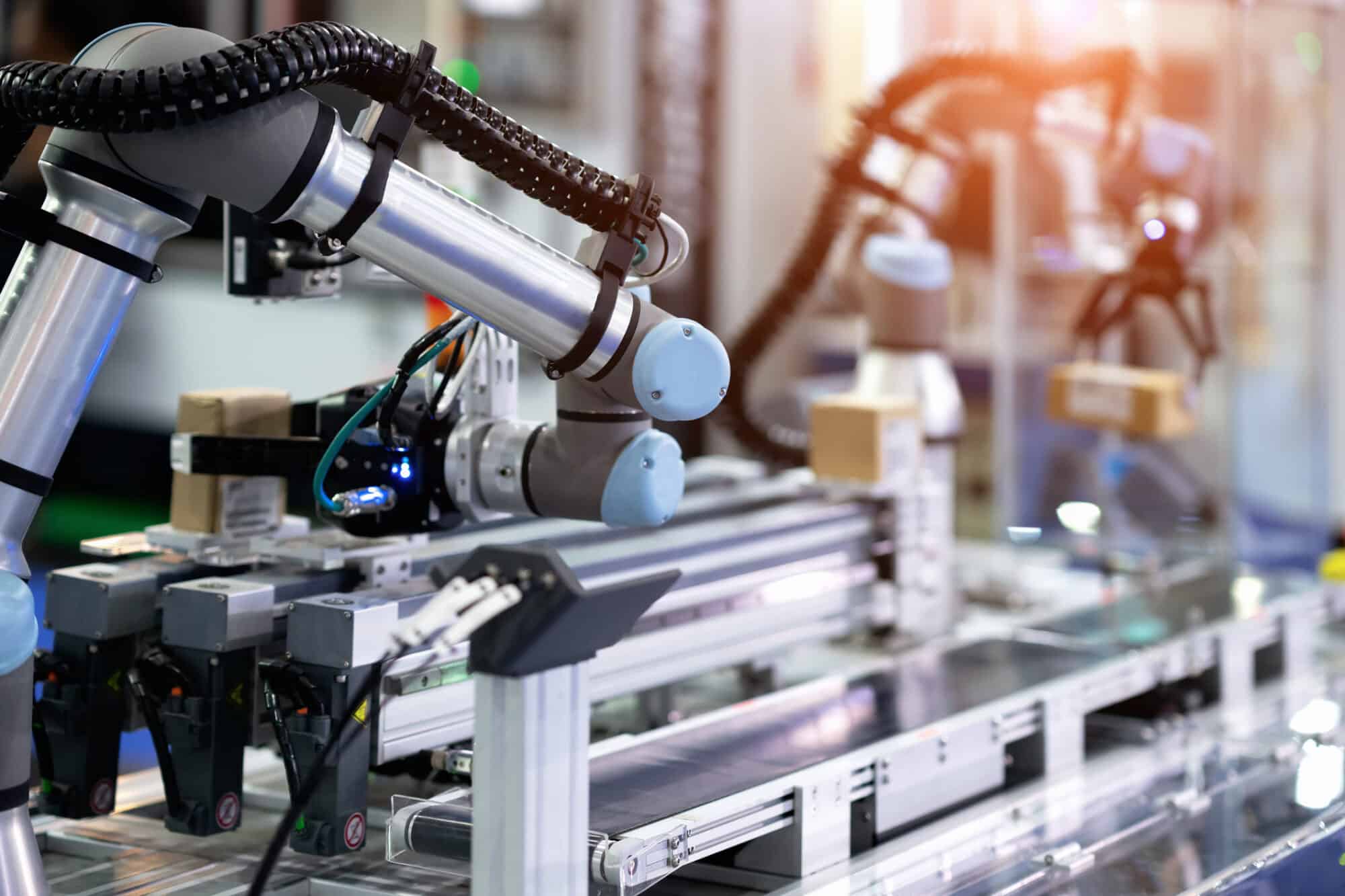Home Sales Decline

Sales of previously owned homes in the U.S. declined in March, CNN reports.
What’s going on: “Existing home sales, which make up the majority of the housing market, fell 4.3% in March to a seasonally adjusted annual rate of 4.19 million, the National Association of Realtors reported Thursday.”
- The median price for a previously owned home last month was $393,500, an increase of 4.8% from March 2023, which was the highest on record.
- The only region of the country to see an increase in existing home sales last month was the Northeast.
Why it’s happening: Higher list prices combined with still-elevated mortgage rates continue to make home purchasing difficult for Americans.
What it means: “Though rebounding from cyclical lows, home sales are stuck because interest rates have not made any major moves,” said NAR Chief Economist Lawrence Yun.
- However, “[t]here are nearly six million more jobs now compared to pre-Covid highs, which suggests more aspiring homebuyers exist in the market.”
NAM: EPA’s National PFAS Drinking Water Standard Threatens Manufacturing

Municipal water systems will soon be required to remove six types of per- and polyfluoroalkyl substances, or PFAS, from drinking water, The New York Times (subscription) reports.
- But the move could backfire and have adverse effects on manufacturers, the NAM said Thursday.
What’s going on: The Environmental Protection Agency on Wednesday announced the first-ever national rule limiting PFAS “to near-zero levels.”
- PFAS are compounds that have been used for decades due to their rare ability to douse fires and resist grease, corrosion and stains. They’re found in everything from semiconductors to medical devices and renewable-energy production equipment.
- But under the new mandate water systems across the U.S. will have three years to monitor the chemicals and a further two years to put into place technology to reduce the compounds’ levels in the water.
- The utilities “would be required to notify the public and reduce contamination if levels exceeded the new standard of 4 parts per trillion for [PFOA and PFOS]. Previously, the agency had advised that drinking water contain no more than 70 parts per trillion of the chemicals.”
The background: The rule comes just over a year after the EPA proposed the first federal limits on two PFAS chemicals, known as PFOA and PFOS.
The funding: The 2021 Bipartisan Infrastructure Law set aside $9 billion to help communities with PFAS removal. The government will make $1 billion of it available to states and territories to help defray the cost of testing and treatment over the next few years.
Higher prices, less security: The new standard is wholly infeasible, NAM Managing Vice President of Policy Chris Netram said, and will lead to cost increases throughout the supply chain and make our national defense more difficult.
- “In many instances, there is no viable alternative for these chemicals, and companies may be forced to change plans dramatically” to comply with the new rule, he said. “The severity of the proposed regulations will mean higher prices for everything—community water and waste systems, medical treatments and electronics. More alarming, the regulations will make it more difficult to produce the equipment our military needs to defend our nation.”
What we’re doing: The NAM is weighing legal options for reversing the final rule, according to Netram.
Trend of the Week: Smart Factories

In 2024, factories will just keep getting smarter. From product design to supply chain management, the sophistication of Manufacturing 4.0 (the current wave of technological evolution) will keep on growing. Here’s what manufacturers should know about these advances and how the NAM can help.
What manufacturers should do: Manufacturers looking to make their factories smarter are focusing on four key strategies:
- Creating efficiencies to improve the bottom line with automation and other M4.0 technologies
- Leveraging smart factories to overcome challenges, such as the workforce crisis and supply disruptions
- Ensuring connectivity on the factory floor to allow for use of plant data to create new business models and revenue streams
- Using M4.0 technologies to improve quality control, speed time to market, enhance safety, boost profits, contribute to sustainability goals and engage employees
Expert opinion: Companies are increasingly investing in industrial connectivity, according to PTC Vice President of Market Development of IoT James Zhang.
- “Rather than approaching industrial connectivity with point-to-point integrations, companies are developing holistic, enterprise-wide strategies,” he explained.
- “This approach streamlines and standardizes data from heterogenous manufacturing environments to a single industrial connectivity platform to provide secure, reliable data for OT systems, including MES and SCADA, and IT systems, including data analytics and industrial IoT.”
Resources for you: Check out these NAM resources that will help guide you through these technological changes:
- The Manufacturing Leadership Council, the NAM’s digital transformation division, offers extensive advice and expertise on Manufacturing 4.0 technologies and how to use them.
- NAM Cyber Cover can help you protect your smart factories, as the increase in digitization also opens new avenues for cyber criminals.
- Check out this podcast from the Innovation Research Interchange (the NAM’s innovation division), which covers current research into the adoption of cutting-edge technologies.
Read the full 2024 trends report here.
Norway Approves Deep-Sea Mining

Norway voted Tuesday to open its waters to deep-sea mining, the process of harvesting valuable metals from the ocean floor, CNBC reports.
What’s going on: Having approved a government proposal Tuesday to allow exploration in its waters, “Norway is poised to become one of the first countries in the world” to allow deep-sea mining.
- The parliament formally agreed to allow exploration of just more than 108,000 square miles of Arctic seabed between Norway and Greenland.
- Companies will be required to “submit proposals for licenses,” which will be granted on a case-by-case basis.
Why it’s important: “Advocates say removing metals and minerals from the ocean’s seabed is necessary to facilitate a global transition away from fossil fuels,” CNBC reports.
- Many of the critical minerals needed for electric vehicles—including cobalt, copper and nickel—are present in large quantities on the seafloor.
- The move by Norway sets it apart from the United Kingdom and the European Union, “which have pushed for a temporary ban” on deep-sea mining, citing environmental concerns.
- In the U.S. last year, lawmakers introduced legislation calling for a deep-sea mining moratorium pending further research into the method’s environmental impacts, according to Honolulu KHLN.
The NAM says: “Norway’s vote should be a wake-up call to the U.S. that other nations are doing everything possible to secure their own sources of critical minerals. We need to do the same,” said NAM Vice President of Domestic Policy Brandon Farris. “That means first reforming our antiquated permitting system.”
Timmons: Justice O’Connor Earned the Respect of a Grateful Nation for a Firm Commitment to Our Constitution, the Rule Of Law and Our American Values of Individual Liberty and Equal Opportunity
Washington, D.C. – National Association of Manufacturers President and CEO Jay Timmons released the following statement on the passing of Supreme Court Justice Sandra Day O’Connor:
“After her ascension to the Supreme Court earned her a place in history, Justice O’Connor earned the respect of a grateful nation for a firm commitment to our Constitution, the rule of law and our American values of individual liberty and equal opportunity. The barrier-breaking first woman on the Supreme Court inspired generations with what President Reagan once described as ‘those unique qualities of temperament, fairness, intellectual capacity and devotion to the public good.’ It was the honor of a lifetime to interview her onstage at an NAM board meeting, and I realized very quickly that you could not sit down with Justice O’Connor without getting a proper grilling in return and being put in your place with a few well-placed zingers. When I asked her to tell us about a difficult case, she quipped, ‘Why would you ask a question like that? They were all difficult, of course, or they wouldn’t have come before the Supreme Court!’
“Justice O’Connor continued her commitment to public service even in retirement, spearheading efforts to strengthen civics education in our schools. As we mourn her passing and celebrate her legacy, the best way to honor her would be to continue advancing her mission. As she once said in a commencement address, ‘If we focus our energies on sharing ideas, finding solutions and using what is right with America to remedy what is wrong with it, we can make a difference.’ Sandra Day O’Connor certainly made a difference that will reverberate through the centuries. Manufacturers extend our deepest condolences to her family and loved ones.”
-NAM-
The National Association of Manufacturers is the largest manufacturing association in the United States, representing small and large manufacturers in every industrial sector and in all 50 states. Manufacturing employs nearly 13 million men and women, contributes $2.91 trillion to the U.S. economy annually and accounts for 53% of private-sector research and development. The NAM is the powerful voice of the manufacturing community and the leading advocate for a policy agenda that helps manufacturers compete in the global economy and create jobs across the United States. For more information about the NAM or to follow us on Twitter and Facebook, please visit www.nam.org.
U.S., Others Release AI Safety Guidelines

The U.S. and 17 other countries have agreed to “a set of guidelines to ensure AI systems are built to ‘function as intended’ without leaking sensitive data to unauthorized users,” The Hill reports.
What’s going on: The 20-page document—unveiled last Sunday and published jointly by the Department of Homeland Security’s Cybersecurity and Infrastructure Security Agency and the UK National Security Centre—enumerates recommendations for everything “from AI system design and development to its deployment and maintenance.”
- The agreement discusses threats to AI systems, how to protect AI models and data and how to release and monitor AI systems responsibly.
- Other signatories include Canada, Australia, Germany, Israel, Nigeria and Poland.
Why it’s important: “This is the first time that we have seen an affirmation that these capabilities should not just be about cool features and how quickly we can get them to market or how we can compete to drive down costs,” said U.S. Cybersecurity and Infrastructure Security Agency Director Jen Easterly.
For Critical Minerals, Companies Look to Old Mines

In the push for more critical minerals, governments and companies worldwide are looking to “a new but also old source”: closed mines, or brownfield sites, The Wall Street Journal (subscription) reports.
What’s going on: “[O]pening new mines takes years—particularly when faced with strong local opposition—and delays might hamper policymakers’ efforts to diversify these supply chains. Even with recent investment announcements, analysts are forecasting supply shortfalls.”
- Reopening shuttered mines is often a quicker and less painstaking process because it allows the companies to “avoid damaging new land and work with local communities that have a memory of economic activity the industry can bring,” as a source told the Journal.
A successful start: One Swedish mining company is seeking to reopen an old copper-and-zinc mine in Norway that closed 25 years ago owing to low copper prices. “Last month, the local municipality unanimously approved plans to reopen” the mine.
- Several American firms are now seeking to reopen closed U.S. sites in the Southwest, and other projects are being planned in Italy and Germany.
A “shift” in the U.S.: A U.S. company with plans to reopen an old gold mine in Idaho recently received funding from the Defense Department, which recognized the importance of the site as a source of antimony, a much-needed mineral in the defense sector.
- “The shift we are seeing in the United States is a growing recognition that we must secure supply chains, and a way to do that is bringing mining home and that means getting the public comfortable to bring mining home,” an executive at the firm told the Journal.
New COVID-19 Vaccines Coming

A new COVID-19 vaccine is set for a September release as cases of the new virus variant “Eris” rise nationwide, according to Reuters (subscription).
What’s going on: “Some public health experts hope that Americans will welcome the new shot as they would a flu jab. But demand for the vaccine has dropped sharply since 2021 when it first became available and more than 240 million people in the U.S., or 73% of the population, received at least one shot.”
- Health care providers and pharmacies will begin offering the updated shots—which target XBB.1.5, “a sub-lineage of the still dominant Omicron variant”—in the second half of next month.
- The new vaccines still need authorization by the U.S. Food and Drug Administration and recommendation by the Centers for Disease Control and Prevention.
Why it’s important: Though the COVID-19 public health emergency ended in May and the private sector has taken on “much of the duty of vaccinating America,” virus-related hospitalizations are up 40% from June’s lows.
- “CDC Director Mandy Cohen said last week in a podcast that … Americans should view these shots as an annual measure to protect oneself, in line with the annual flu shot.”
In China, Deflation Worries Grow

As most of the world grapples with inflation, China is facing deflation that could push it into “an economic trap,” according to The Wall Street Journal (subscription).
What’s going on: “Prices charged by Chinese factories that make products ranging from steel to cement to chemicals have been falling for months. Consumer prices, meanwhile, have gone flat, with prices for certain goods—including sugar, eggs, clothes and household appliances—now falling on a month-over-month basis amid weak demand.”
- China’s economy is growing, but slowly, and the government recently announced a series of stimulus programs to help.
Parallels with Japan: While most economists see China avoiding a prolonged recession, some “see alarming parallels between China’s current predicament and the experience of Japan, which struggled for years with deflation and stagnant growth” in the 1990s, following collapses in stock market and real estate value.
- If Japan’s fate were to befall China, the latter would face another hurdle: the usual methods for combating these problems would be either unpopular or toothless “due to the country’s heavy debt load.”
A mixed bag: A long period of lower prices in China could help bring down inflation elsewhere in the global economy, including the U.S.
- But … “[a] deflationary spell in China would also likely mean weaker Chinese demand for food, energy and raw materials, which big chunks of the world rely on for export earnings.”
Effects of uncertainty: And the longer that prices fall and stay down, the more entrenched deflation becomes—making debts “harder to bear and profits and incomes fall. Companies shed workers to fatten shrinking margins.”
Another Rate Increase Likely

The Federal Reserve will likely raise interest rates again in the near future, Chairman Jerome Powell said Wednesday, according to The Wall Street Journal (subscription).
What’s going on: Powell said that because the Fed lifted rates so quickly last year, the effects haven’t been fully realized yet.
- “‘Policy hasn’t been restrictive for very long … so we believe there’s more restriction coming,’ Powell said during a panel discussion with other central bankers at the European Central Bank’s annual symposium in Sintra, Portugal.”
- Core inflation will probably not reach the Fed’s target of 2% until 2025, Powell added.
The background: While central banks throughout the world have increased interest rates quickly in the past year in an effort to control inflation, they “have been astonished so far at the resilience of their economies to higher borrowing costs.”
- Earlier this month, the European Central Bank raised its rates a quarter percentage point. Last week, the Bank of England raised its key interest rate by a relatively aggressive half percentage point, citing a resilient economy, tight labor market and large pay increases for workers.
- At its meeting earlier this month, the Fed left the benchmark federal-funds rate at 5% to 5.25%, following 10 consecutive rate increases at prior meetings.
What it means: “Slowing down rate increases, including by possibly raising rates at every other meeting, represents an ‘effort to get more information from the data to see how much restraint is really coming,’ [Powell] said.”
What’s next: Most central banks—including the Bank of England—will probably raise rates again in the near future, according to the Journal.